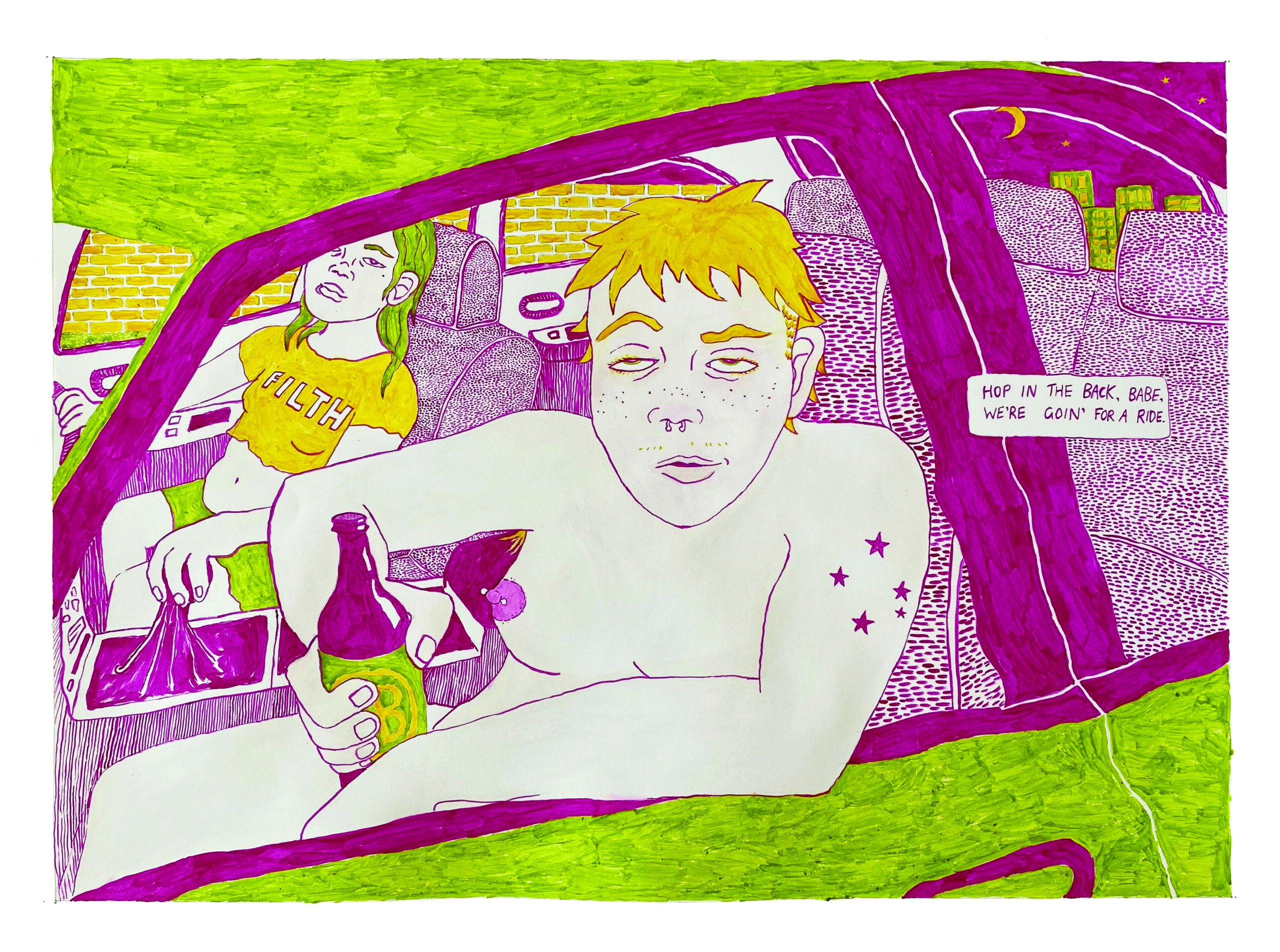Above: Lily Langley, Fat-Arming it, 2021. Ink on paper, 57 x 76 cm. NFS. Courtesy: The Artist
Lily Langley’s Party Animal invites the viewer into a realm where the whimsical dances with the disconcerting, where the vibrancy of youth collides with the shadows of uncertainty.
Langley, known also by the moniker Motormouth Comics, employs a multidisciplinary approach, weaving narratives that traverse the terrain of memory, folklore, reverie, and dread. Langley’s deft hand in employing line as a storytelling device is evident, each stroke imbued with intentionality, leading us deeper into the composition. Unsettling at times, but masterfully depicted this work continues to enthral the longer it is considered.
GRACE ALTY
FINE ARTS SPECIALIST AT INTERNATIONAL ART CENTRE, AUCKLAND
Despite a cartoonlike style and a bright, youthful colour scheme, Party Animal presents edgy conundrums. Beer in hand and semi-naked, the central figure confronts the audience from a car’s passenger seat with a drowsy intoxicated expression. The driver potentially subverts the often-discriminatory insult ‘filth’ by ‘owning it’ on their t-shirt. Is the text HOP IN THE BACK, BABE, WE’RE GOIN’ FOR A RIDE a playful invitation or a coercion? The work evokes complex questions around the supposed validity of unhelpful social judgements, how individuals learn to make their own judgements and the right to agency over one’s choices and own body.
CASSANDRA HARD LAWRIE
CURATOR & VISUAL ARTS COORDINATOR, ART SPACE ON THE CONCOURSE (WILLOUGHBY CITY COUNCIL)
Langley’s bold lines, vibrant colours and use of verbal elements serve up a comic book-style slice
of narrative, dripping in Australiana and youth urban culture. There is a sense of danger, taking place at night, the alcohol suggesting potential loss of control, and the words spoken by the primary figure a demand, thinly veiled as an invitation. The artist reveals the notion of the mythical werewolf, betraying one’s own body and an uncertain identity. In that regard, the full tableau does evoke a heavily stereotyped masculine energy but offered to us through a female lens allowing us to question the validity of these tropes. The comic book style really gives the sense that the immediate tableau is just one moment in what could well be a continuing narrative. From this we are left to wonder, is the request to get in the car accepted, and what takes place on this apparent ‘ride’. Will the werewolf bare its teeth?
LUKE POTKIN
FAIR DIRECTOR, THE OTHER ART FAIR

